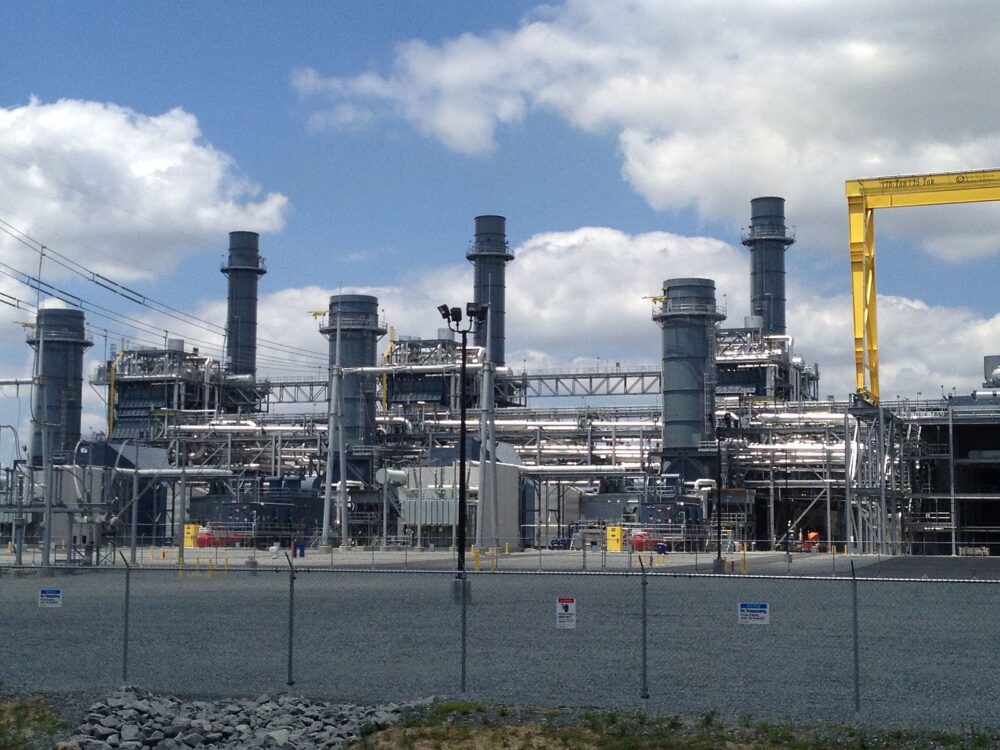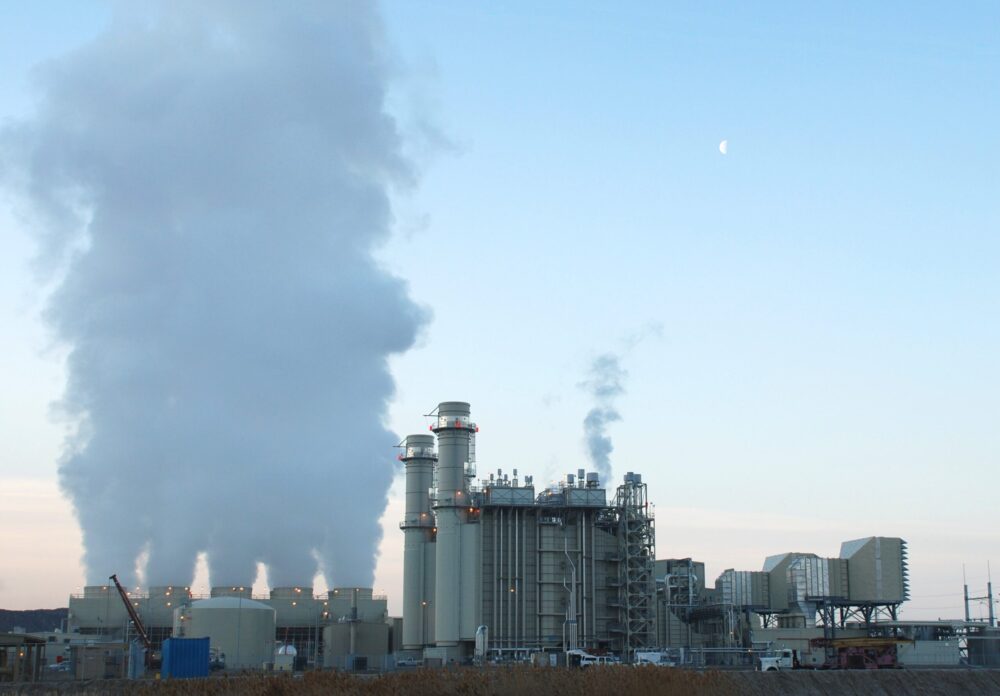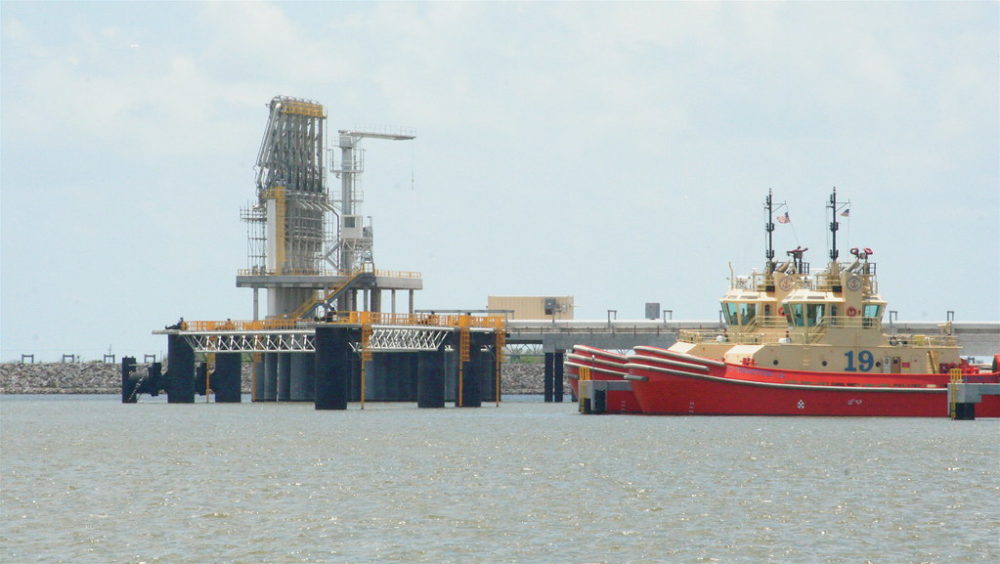The industry looks set to play a key role in the energy transition as a number of countries continue to shift away from a reliance on coal towards gas in a bid to reduce emissions and air pollutants

Energy researcher Wood Mackenzie’s latest outlook report claims 2021 will be a “defining year” for the gas and LNG industry (Credit: Wikimedia Commons/Peoplepoweredbyenergy)
The future of fossil fuels is an increasingly hot topic of conversation as the world aims to reduce emissions – but could 2021 be the year that defines the role of gas in the energy transition?
Although the natural gas industry remains one of the highest polluters, it looks set to play a key role as a number of countries continue to shift away from a reliance on coal towards gas in a bid to reduce emissions and air pollutants.
According to the International Energy Agency (IEA), there is potential in today’s power sector to reduce up to 1.2 gigatonnes of CO2 emissions by switching from coal to existing gas-fired plants, which could bring down global power sector emissions by 10% and total energy-related emissions by 4%.
Energy researcher Wood Mackenzie’s latest outlook report claims 2021 will be a “defining year” for the gas and liquified natural gas (LNG) industry and identifies five themes that could impact the industry this year.
Wood Mackenzie vice president Massimo Di Odoardo said: “Policymakers will need to provide clarity on decarbonisation plans, including how they see the role of natural gas, following pledges to achieve climate neutrality.
“Gas players will have to show commitments to decarbonise natural gas, including through carbon capture, utilisation and storage (CCUS) and blue hydrogen. Decarbonising natural gas will become a strategic priority for the gas industry.”
Themes that could impact the gas industry in 2021 as part of the energy transition
Asian and European policies to support gas demand in the medium term
Almost 50% of today’s global carbon emissions and 75% of LNG demand are covered by countries with carbon neutral goals.
Wood Mackenzie believes the resilience of gas in the energy mix will depend upon the pathways policymakers adopt to achieve net-zero targets.
The acceleration in coal-to-gas switching is a key theme to watch in Asia as coal accounts for more than 50% of the region’s power mix.

The energy researcher’s report highlights that in Europe, additional coal plant retirals in Germany and Poland could support more gas utilisation in the medium term, similar to what is happening in other European countries.
Additionally, it adds that firm policies in support of CCUS as well as blue hydrogen, would “support gas demand in hard to decarbonise sectors”.
Large-scale CCUS and blue hydrogen projects in Europe could take FID in 2022
Players across the gas value chain have announced proposals for the development of large-scale CCUS projects to decarbonise localised industrial clusters and/or to use in combination with steam methane reformers (SMRs) to produce blue hydrogen from natural gas.
New momentum is building up for CCUS for industrial and power plants too, where costs for capturing CO2 could be in excess of $100 per tonne of CO2. Wood Mackenzie claims public support and regulation, as well as new business models have all been key to supporting recent developments.
Di Odoardo says: “Companies are forming partnerships to exploit economies of scale, share investment costs across the value chain and monetise by-products.
“Industrial clusters, which account for 15-20% of global CO2 emissions, are emerging as ‘sweet spots’, combining interests and expertise from industrials, utilities, infrastructure players and international oil companies.
“Projects will need to show tangible progress this year. Their success will be crucial to ensure gas remains resilient in the future energy mix as countries set out plans to achieve net-zero energy systems.”
Expect Biden to make net-zero carbon announcements but unlikely to turn into legislation in 2021
During the presidential campaign, Joe Biden announced an ambitious $2tn “clean energy revolution” plan that aims to accelerate the US energy transition, including setting a net-zero carbon emission target in the power sector by 2035 and stating his intention for a US return to the Paris Climate Agreement.
Di Ordoardo believes that if these policies are implemented, they could have “long-term effects on the US energy landscape”.
“We anticipate zero-carbon power generation to reach 58% by 2035, supported by strong penetration of wind and solar,” he adds.
“But with gas-fired generation increasing to 36%, or 32 billion cubic feet per day, a significant gap towards the net-zero target would remain.
“A change to reach net-zero carbon emissions in the power sector in 2035 would require a dramatic shift from the current environment.”
TTF and Asian LNG prices set to continue rising in 2021
Global LNG prices have made an impressive climb from the $2 per million British thermal units (mmbtu) experienced for most of the summer, with Asian LNG prices trading above $20 per mmbtu.
Wood Mackenzie expects prices will come down in Q2, but it adds that the current cold spell in the northern hemisphere signals what looked like a finely balanced summer just a month ago, is now looking “increasingly tight”.
Di Odoardo says: “Much of the LNG price spike has been driven by cold weather, supply disruption and lack of shipping capacity, and delays at the Panama Canal. Fundamentals have been playing a role too, with Asian LNG demand in Q4 2020 already at pre-coronavirus levels.
“With the current cold spell expected to continue throughout most of January, Asian LNG demand in Q1 2021 will remain strong, paving the way for additional demand for LNG stocking in the summer across North Asia. This, in turn, will reduce the pressure on Europe to absorb excess LNG supply in the summer.”

Despite global LNG supply expected to increase by 17 million tonnes (Mt) in 2021, mainly as a consequence of full utilisation of US LNG through the summer, the report claims the current cold spell in the northern hemisphere is “paving the way for a tighter global gas market throughout the year”.
Low temperatures mean that storage levels in Europe are already more than 15 billion cubic metres lower than last year and are now close to the past five years’ average.
But, on the other hand, the analysis notes that expectations of higher coal and European carbon prices, also partially driven by the current cold spell, provide headroom for higher European summer gas demand.
Di Odoardo says: “Global prices reached record lows in 2020, with TTF (Title Transfer Facility) averaging $3.2 per mmbtu and Asian LNG spot averaging $3.9 per mmbtu. 2021 will show a stark difference, we anticipate TTF averaging $5.6 per mmbtu and Asian LNG spot averaging $7.6 per mmbtu.”
2021 long-term contract signing to hang on Qatar’s resolution to press ahead with North Field East
Following a raft of LNG project cancellations last year, the report highlights that current high prices will have “emboldened LNG developers”. But it adds that for new projects to be developed, contract activity will “need to pick up”.
Wood Mackenzie suggests buyers will be looking to assess their portfolio requirements and just how comfortable they are in committing for new long-term firm LNG versus increasing their spot market exposure.
But Di Odoardo says buyers will want to understand just how resilient spot LNG prices will be this summer, following the “hype in the winter”.
He also believes they will want “clarity on domestic policy attitudes towards gas”, following carbon neutrality pledges in Northeast Asia.
“Buyers will be confident that a wave of uncontracted LNG will be hitting the market post 2025, including from LNG Canada (14 Mt) and the projects that have taken final investment decision (FID) in 2019 (70 Mt),” adds Di Odoardo.
“But they might start questioning Qatar’s commitment to quickly move forward with its 32 Mt per annum North Field East project, following continued delays.
“The market will need about 85 Mt per annum of new LNG supply by 2030. Provided Qatar takes FID early this year, most buyers will be in no rush to secure more long-term supply, despite oil indexation levels being below 11% Brent currently.
“A buyer’s market remains despite the current winter Asian LNG spot price spike. However, further delays to Qatar’s FID, will push some buyers to look for new long-term commitments.”
